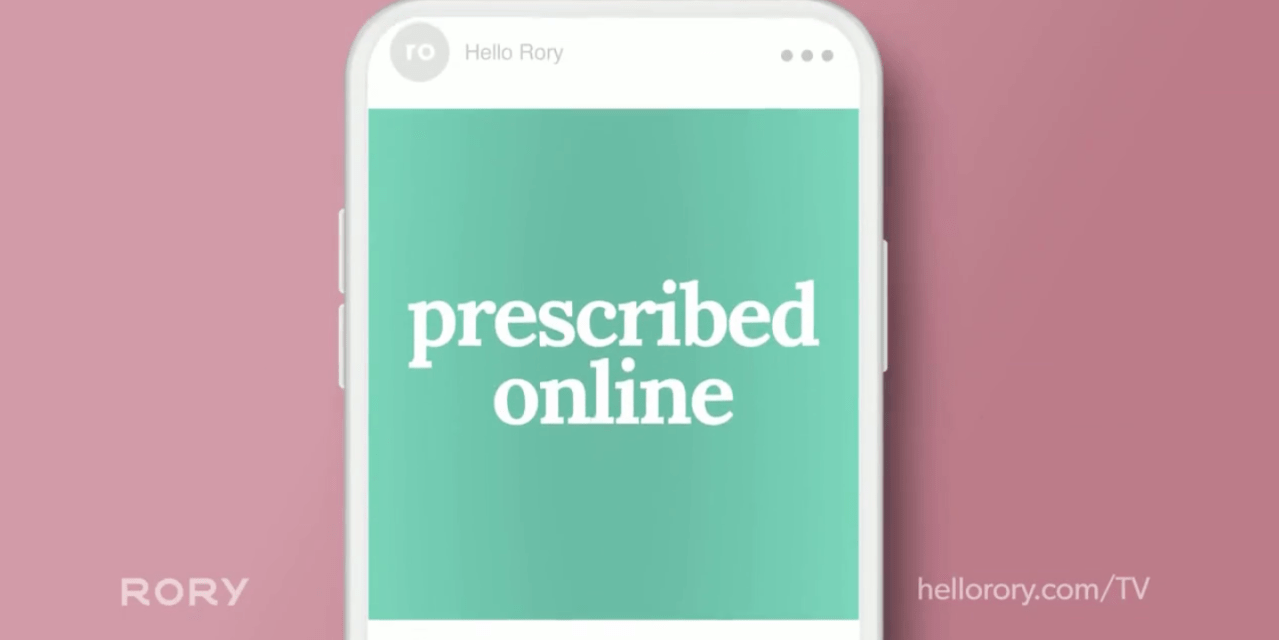Rory is running its first TV commercial as telehealth is having a moment

As more people are considering trying telehealth for the first time, Ro is moving forward with marketing and product expansion plans to introduce its women’s focused-brand, Rory to new customers.
Last week, Rory ran its first-ever TV ad, and this week introduced a new product offering, a customized prescription skincare treatment. The skincare treatment is also being offered through Roman, Ro’s men-focused brand. Rob Schutz, chief growth officer at Ro, said that the company has been “shipping more product than ever before” over the last month.
While he declined to share overall growth numbers for Ro, he said that Google search traffic across its three brands — Roman, Rory and Zero — was up 30% between March and April. And, certain products are seeing triple digit growth month-over-month. Treatment requests (meaning a customer sought to get a prescription for that product through Ro’s platform) for Ro’s smoking cessation products were up 90% month-over-month, while they were up 280% during the same time period for Rory’s vaginal dryness and sleep treatment products.
With the TV ad as a springboard, Ro is using this moment to try to become a telehealth powerhouse.
Schutz said that Ro’s strategy right now has mostly been the same as it’s ever been — to continue to add more offerings to Ro’s platform in order to appeal to more people. With Rory in particular, the startup is trying to broaden the age spectrum of members, as the brand initially launched last year with treatments for menopause. Right now, the average age of members is 43. But, Ro is betting that, as more people are staying inside and don’t want to even leave to visit a doctor’s office, they’ll be more open to trying telehealth.
“Telehealth is well-positioned right now given that the messaging and simplicity of a platform revolved around connecting with physicians from the comfort of your home, with products delivered to your home — those were kind of convenience value propositions, and are now safety value propositions,” Schutz said.
In March, Ro launched a free coronavirus risk assessment through its platform, where people who are concerned that they’ve been exposed to or contracted illness can answer questions about their symptoms and then, if deemed necessary, Ro will connect them with a doctor who will provide a free video consultation. That assessment has helped put Ro in front of many new customers organically. Justin Bieber tweeted out a link to the assessment, while Ro has also partnered with startups including Care/of and Barkbox to create free landing pages for the coronavirus risk assessment, branded with their company’s logos that they can promote to their employees and/or customers.
Ad position: web_incontent_pos1
Schutz said the company didn’t consider postponing the launch of Rory’s TV ad; “Given the traction that we’ve seen with Rory, and the growth we’ve seen month over month, TV is a natural next step when it comes to channel mix.” The coronavirus did throw a slight wrinkle into the production of the commercial, as the startup couldn’t go out and shoot any new footage, and instead had to rely on a mix of stills from a photoshoot two months ago.
Chris Toy, the CEO and co-founder of MarketerHire, a platform for freelance marketers, said that he saw many brands cut their advertising spend to near-zero in the first few weeks of the coronavirus outbreak as they waited to see how consumer spending would be affected. “What we are seeing [now] is a bigger emphasis being put on efficiency around ad spend,” he said like some companies considering bringing advertising work in-house.
Schutz said that the company hasn’t, as a result of the coronavirus, pulled back any advertising spend completely on the channels it advertises across, which includes podcasts, TV, influencer partnerships and digital channels like Google and Facebook. Rather, Schutz said that Ro operates on “a top 20%, bottom 20% basis,” where it will constantly be cutting the worst-performing ad formats or partnerships across certain channels.
“We’re really just making sure that we are being diligent about, if something is not performing, cutting that off as soon as possible,” Schutz said.

